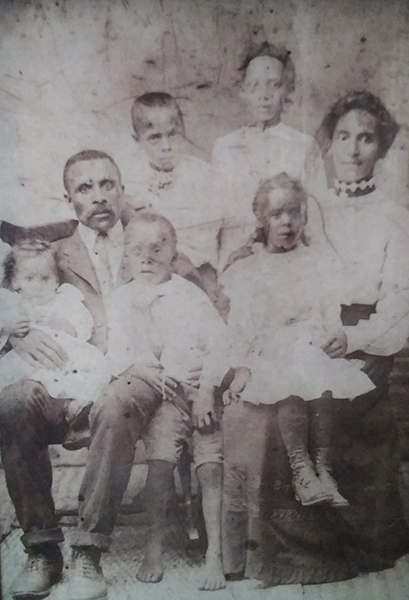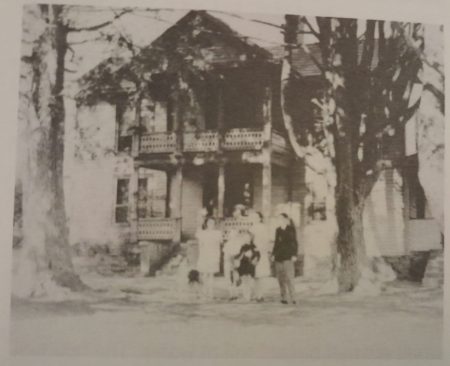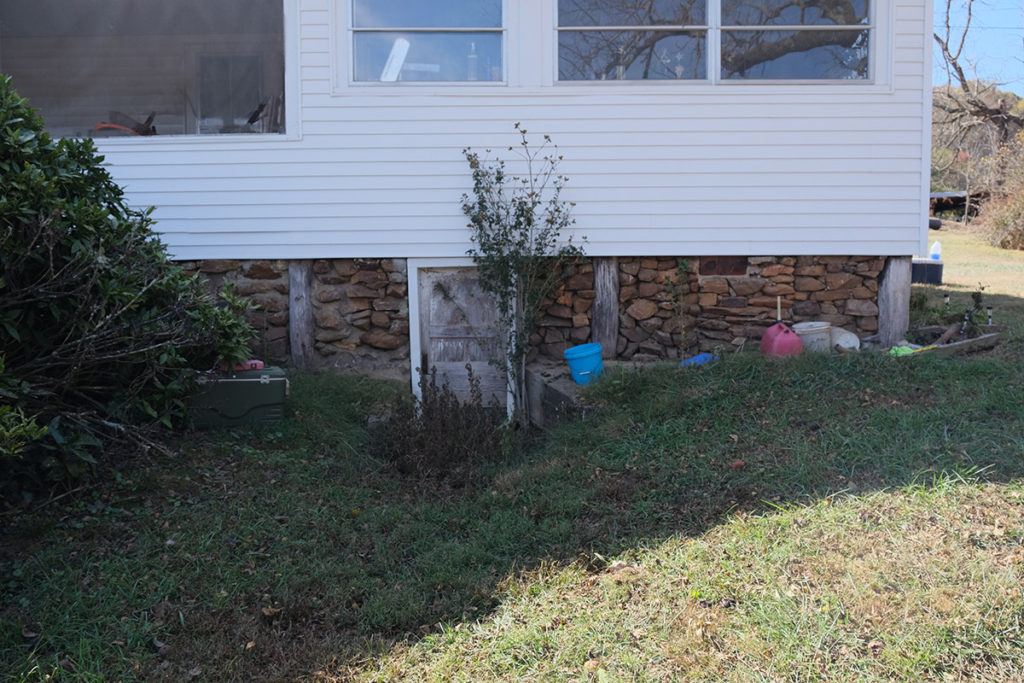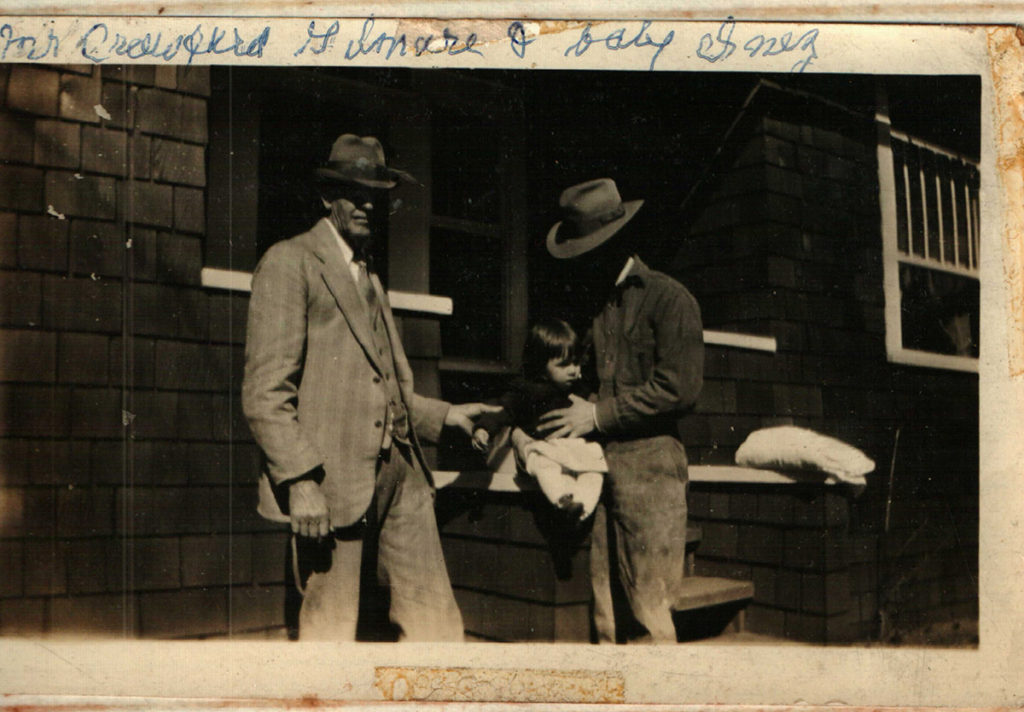A Tour of the Crawford Farm
It wasn’t until I rode around Franklin with one of the Crawford descendants, Emory, that I finally figured out where the Crawford homestead was located. As it turns out, it was right down the street from New Hope Cemetery.
During my visit, Emory was kind enough to show me around the old Crawford property. While the home and its surrounding land are owned by a new family now, many of the old buildings and equipment were still there. The wooded trails around the property are also still visible.

The home was surrounded by a cluster of hemlock trees and most if not all of them, were there during Emory’s childhood. The house was built on land obtained by Emory’s great-grandfather, Captain James Gilmer Crawford (1832-1889). He mentioned that in total, the family had owned over 300 acres of land in that area. The land surrounding the Crawford homestead has shrunken considerably since his mother sold the land. Today, a neighborhood of modest one-story homes have sprung up since then.
My great-great grandfather, Joseph Elexander Stewart (1873-1951), worked for Emory’s grandfather, Lee Crawford (1867-1930). Among Joe’s tasks included delivering milk, farming, gardening, and stacking hay (and likely more).1 His wife, Carrie (1878-1986), also occasionally worked for the Crawfords, cleaning their laundry, cooking, and caring for their family members when they were ill.

In the Foxfire 5 book, Carrie recalls a conversation that Joe and Lee Crawford had once.2
(As you’ll see, she refers to a “Mr. Crawford.” Based on how Lee Crawford is referenced in photographs (usually as “Mr. Crawford”) and Lee, Joe, and Carrie’s ages, I have concluded that “Mr. Crawford” and “Lee Crawford” are the same person. Notably, Gilmer Crawford is usually referred to as “Gilmer.”)
My husband, Joe, worked on a farm for a man named Mr. Crawford. [There were several black men] working for him, and he asked one of them to fill in on a different job one day and this man said, “No, I ain’t going to do it. I’ll go home first.”
Joe said, “I hate to see anybody be so contrary.”
Mr. Crawford said, “Well, I was trying to favor him and give him a job, but he won’t accept it. If he had lived way back yonder during slavery time, why from what they tell me, he’d got in there and worked or he’d a’got his back torn up. I’m glad that it isn’t like that now.”
Joe said, “Well, if it was like that now, these men that done that to people wouldn’t have a place to lay their head, ’cause I’d burn up everything they had.”
Mr. Crawford said, “I’d be ashamed.”
And Joe said, “I would. Before I’d be drove around and knocked like they done then…”

When I asked Emory how Grandpa Joe began working for Lee Crawford, he said that Joe may have worked for the family since Captain James Gilmer Crawford owned the farm. That might be possible, but I haven’t been able to verify that yet.
The Crawfords and the Stewarts seemed relatively close. Lee Crawford often brought his son, Gilmer (1902-1950), to Joseph and Carrie’s home to hear the music their family would play. Gilmer and Joseph Canara Stewart loved to dance and play the fiddle together. 3 Carrie also kept several photos of the Crawford children in her photo albums. However, these relationships can be quite complex.
Emory has often told me how important Carrie and Joe were to his upbringing, emphasizing that they taught him much about life. He once told me that when he learned his first curse word, he said it in front of Carrie. She subsequently gave him a scathing look and provided quite the witty response. As for Joe, the Crawford children would often follow him around the farm, hoping to try a morsel of his tasty looking lunches.
As we continued along the property, he pointed out an area near the house where Joe kept a small garden. He also brought my attention to the Crawford’s root cellar, where the family would store preserved foods, potatoes, and other hardy vegetables. I imagined Joe and the other Black men who worked on the farm regularly helped store crops in there for the colder seasons.


Behind the house were the farm buildings. A barn dedicated to milking cows was where the Crawford men and Grandpa Joe often worked. The old stanchions, which held the cows in place, were still there, even if buried under piles of equipment and an assortment of random objects. A narrow trough in the bottom of the floor collected the cow manure, which would be washed away and used as fertilizer elsewhere on the farm.
“It really was ahead of its time,” my tour guide mused as he looked around.
As we approached the central barn, he gestured at the large building, noting that the grain siloes were now gone. Then the memories started flooding back. He reminisced about playing in the hay lofts with one of Carrie’s grandchildren. He pointed out a trails that people would take to various places on and off the property. He recounted once finding a big black snake among the hen roosts and finding Native American artifacts on a mound not far from the barn.
To learn more and “take the tour” for yourself, check out the video below. Thanks again to Emory for his willingness to show me around!